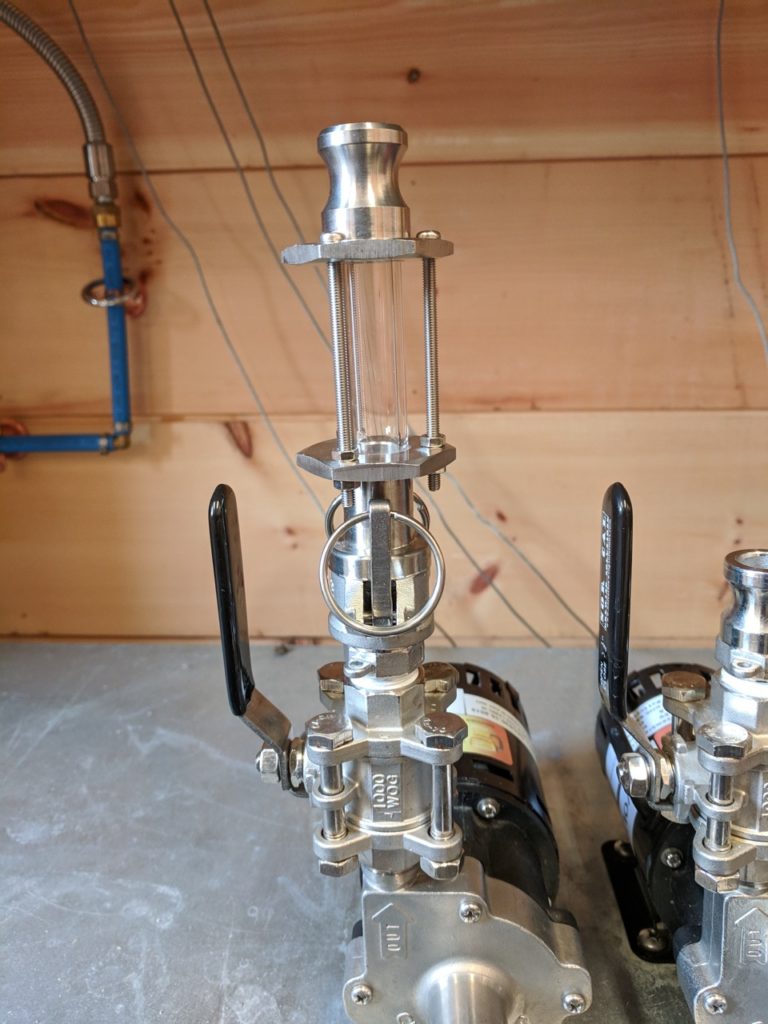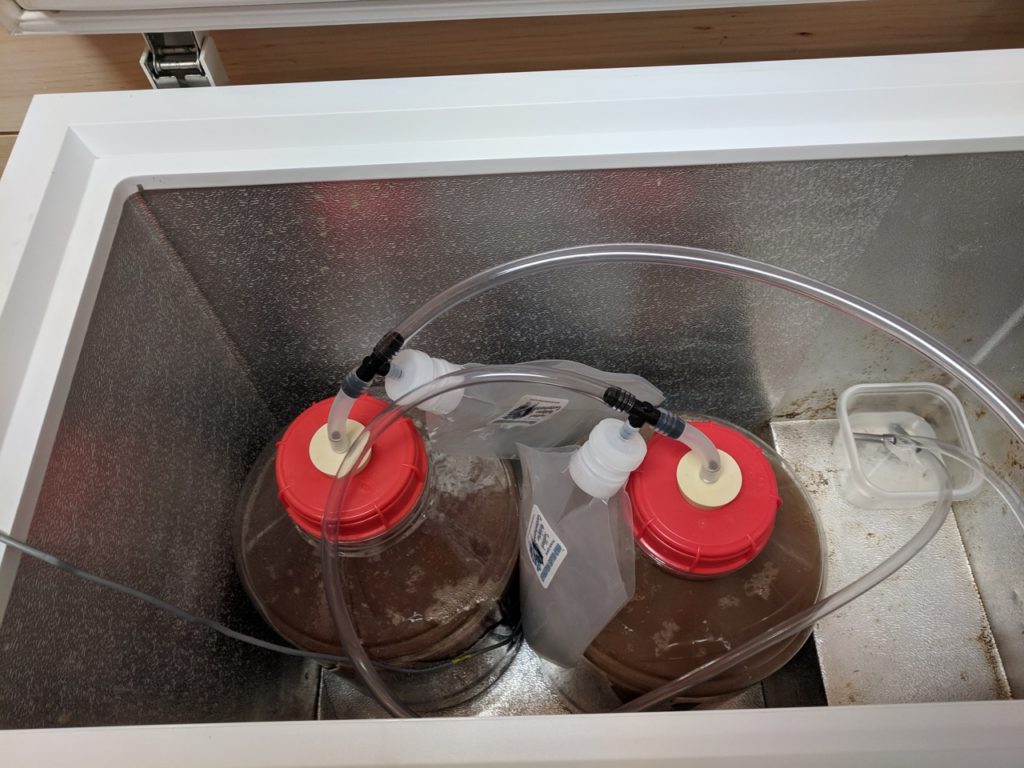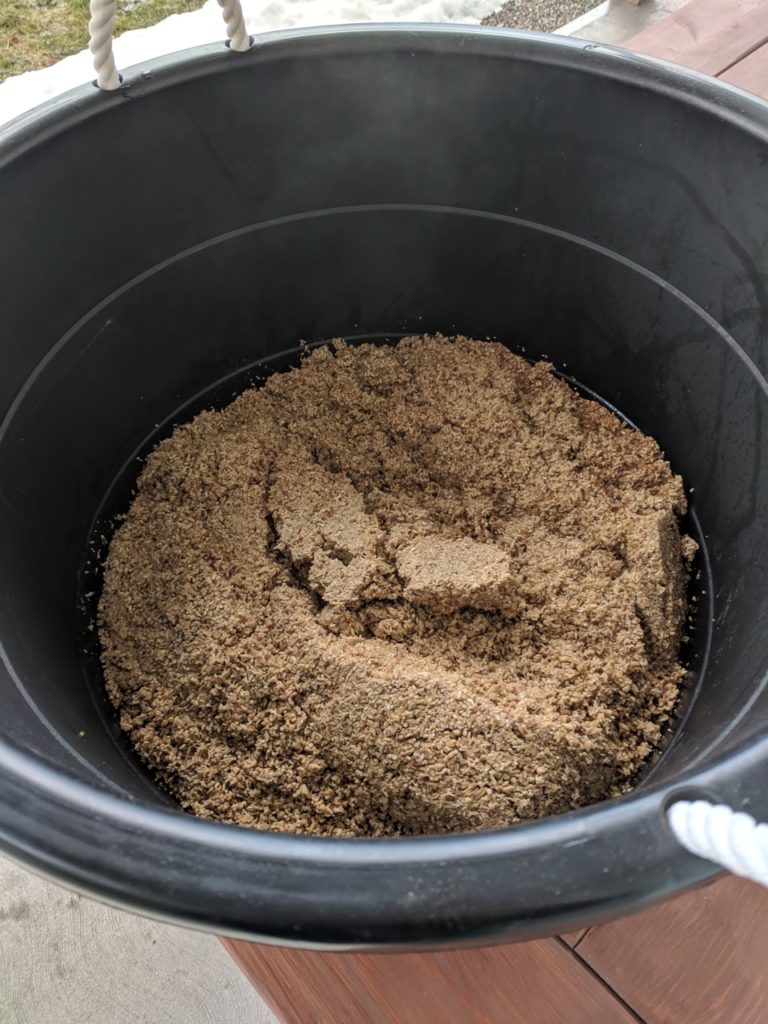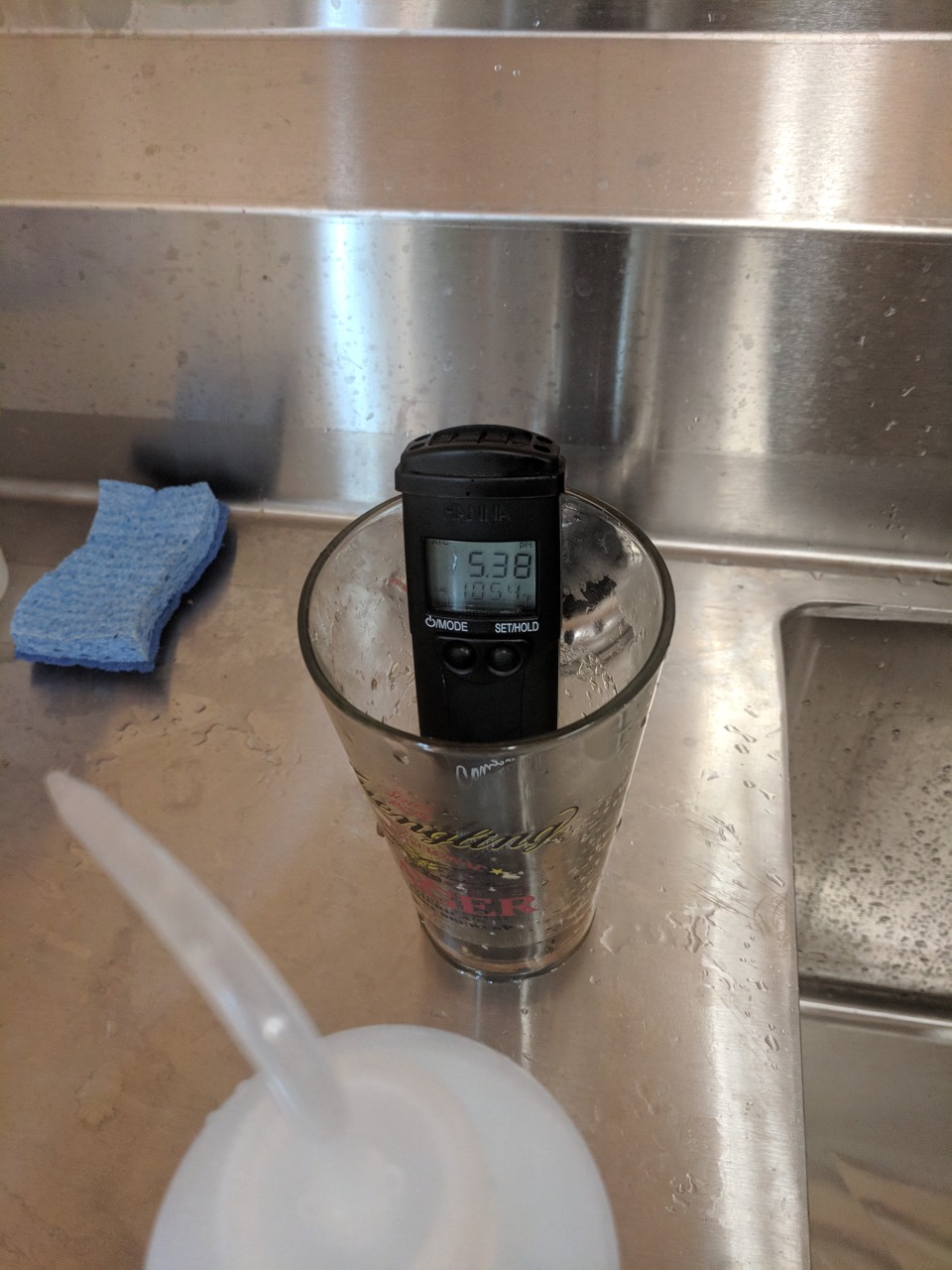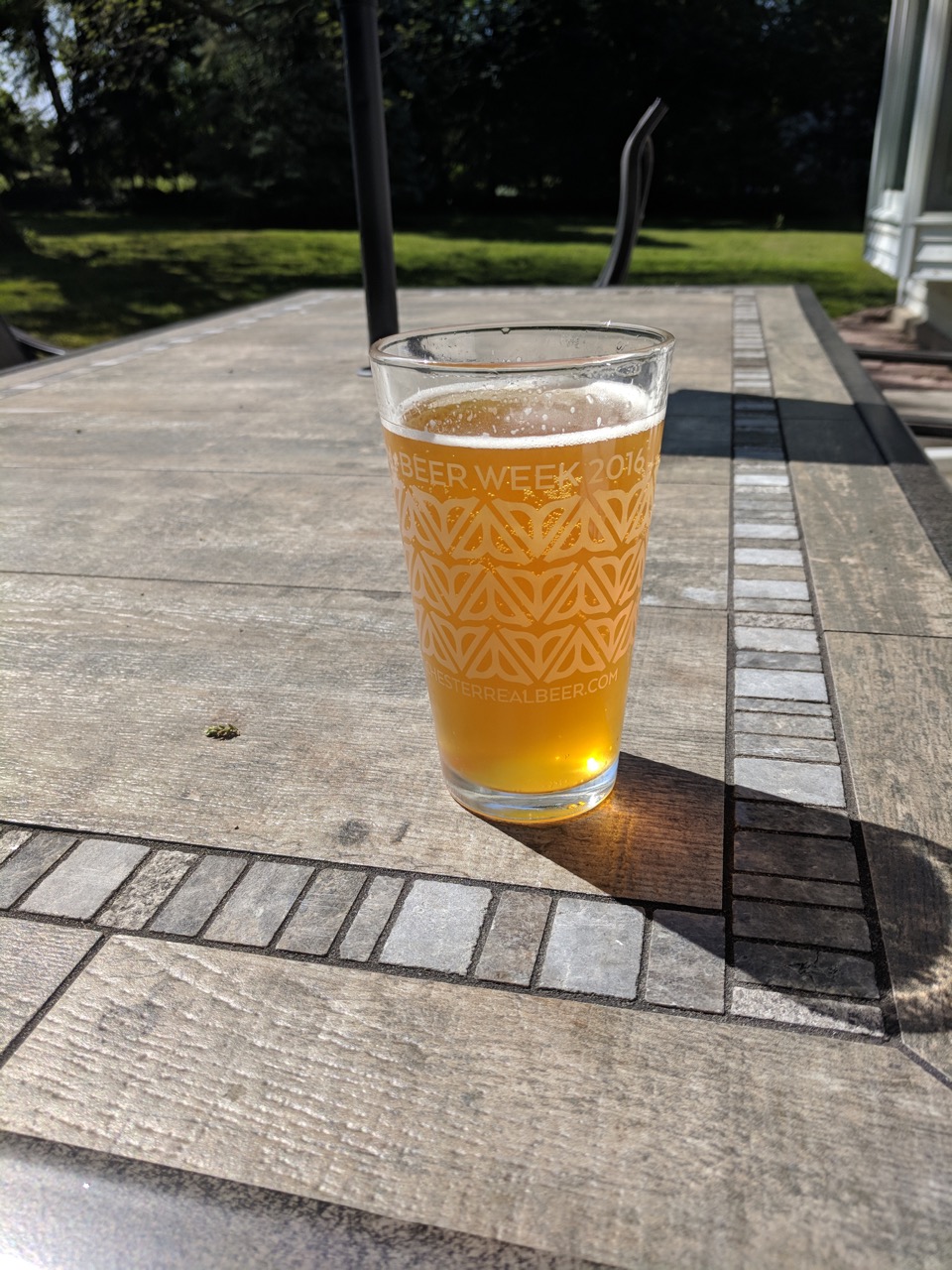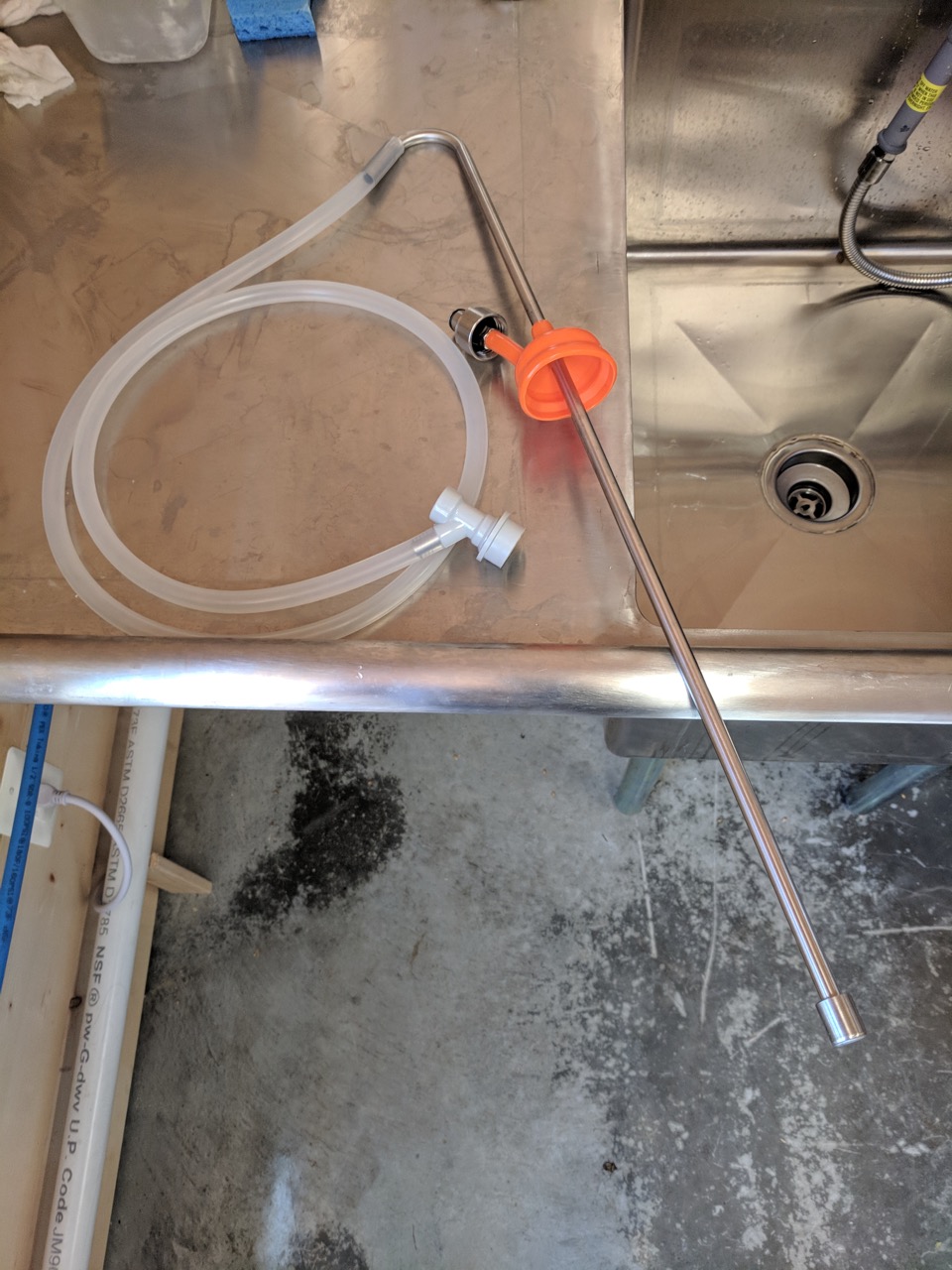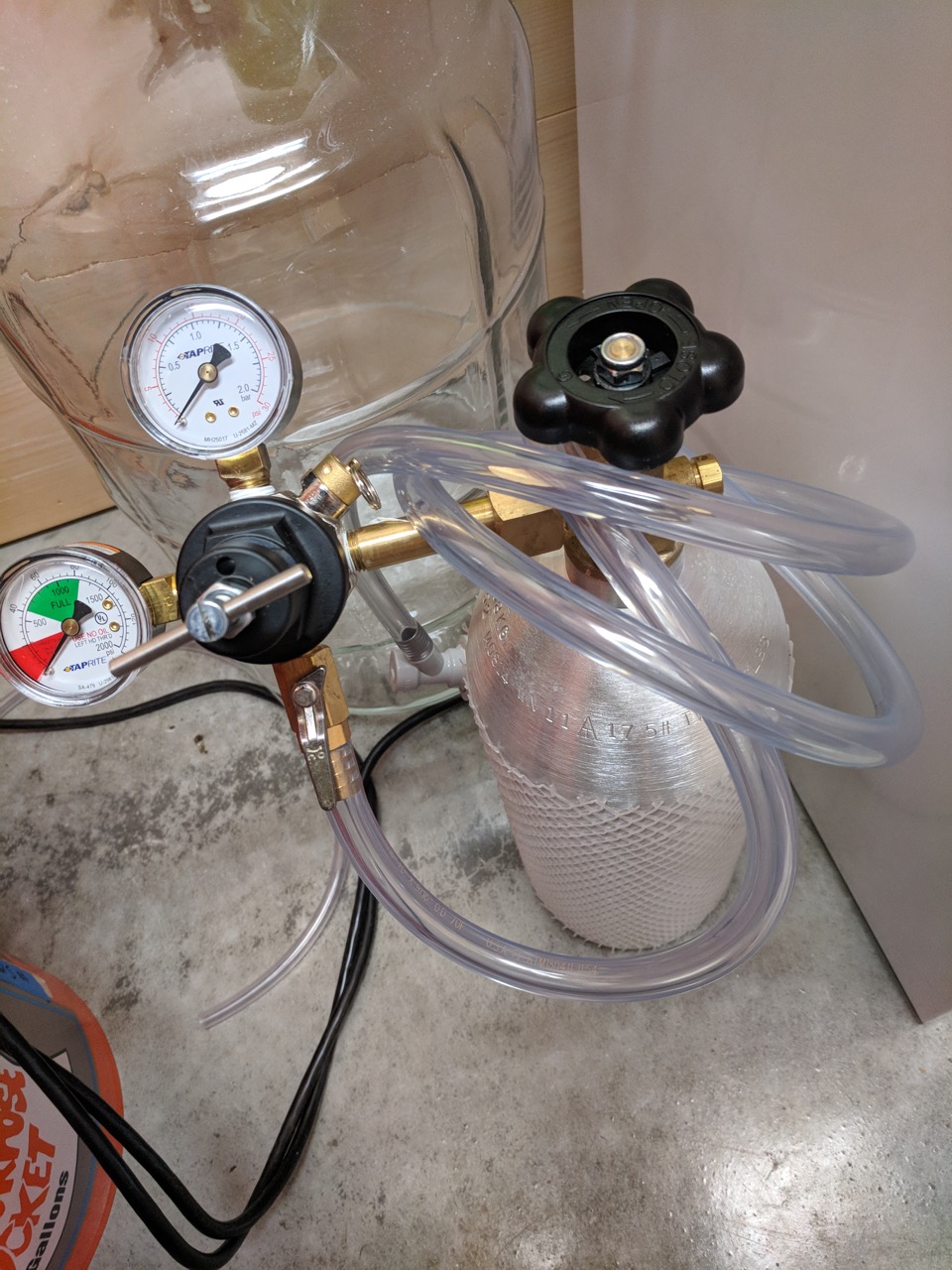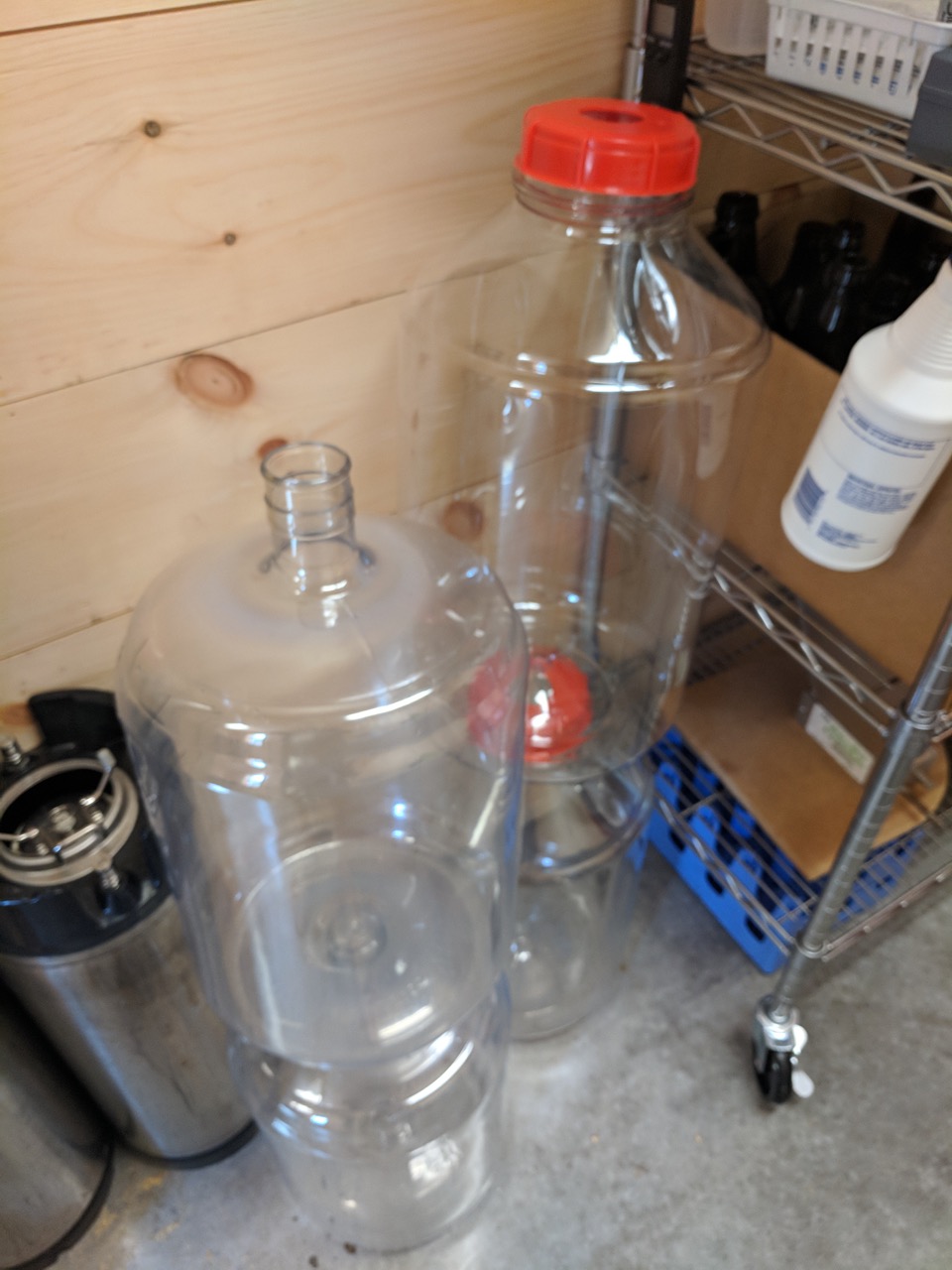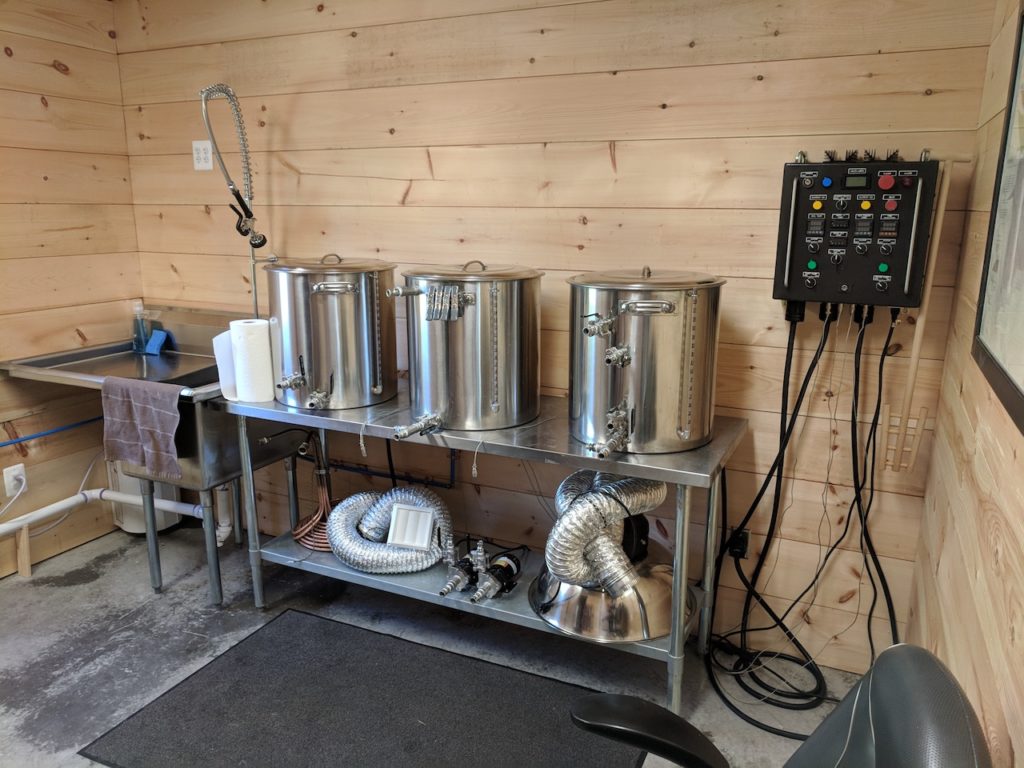It has been a struggling to find time to brew. Thankfully my Wife encouraged me to brew a week ago. So on short notice I pulled together a IPA recipe that uses a light malt base and some hops that I have on hand. If it’s good I make make it a few times to play with different hop combos.
Results: OG 1.057 (12 gallon) / FG 1.007 / ABV 6.56%
OG 1.058 / FG 1.010 / ABV 6.26% / IBU 57 / SRM 3.9
21# 2-row
2.5# Vienna
1oz Commet @ 60min boil
1oz Commet @ 15min boil
2oz El Dorado @ 15min boil
2oz Commet @ 2min boil
4oz El Dorado @ 2min boil
1oz Commet Dry Hop @ 5 days
5oz El Dorado Dry Hop @ 5 days
Water target – SO4 200 (25g Gypsum added to 19gal)
Mash at 152° for 60 minutes then raise to 168° and hold for 10 minutes. Collect 14 gallons and boil for 60 minutes. Produces 12 gallons at the end of the boil and 11 gallons in the fermenter.
Fermentis – Safale – American Ale Yeast US-05

Start of Mash 
End of mash 
1.057 OG 
Hop dam works decent and very easy to clean


